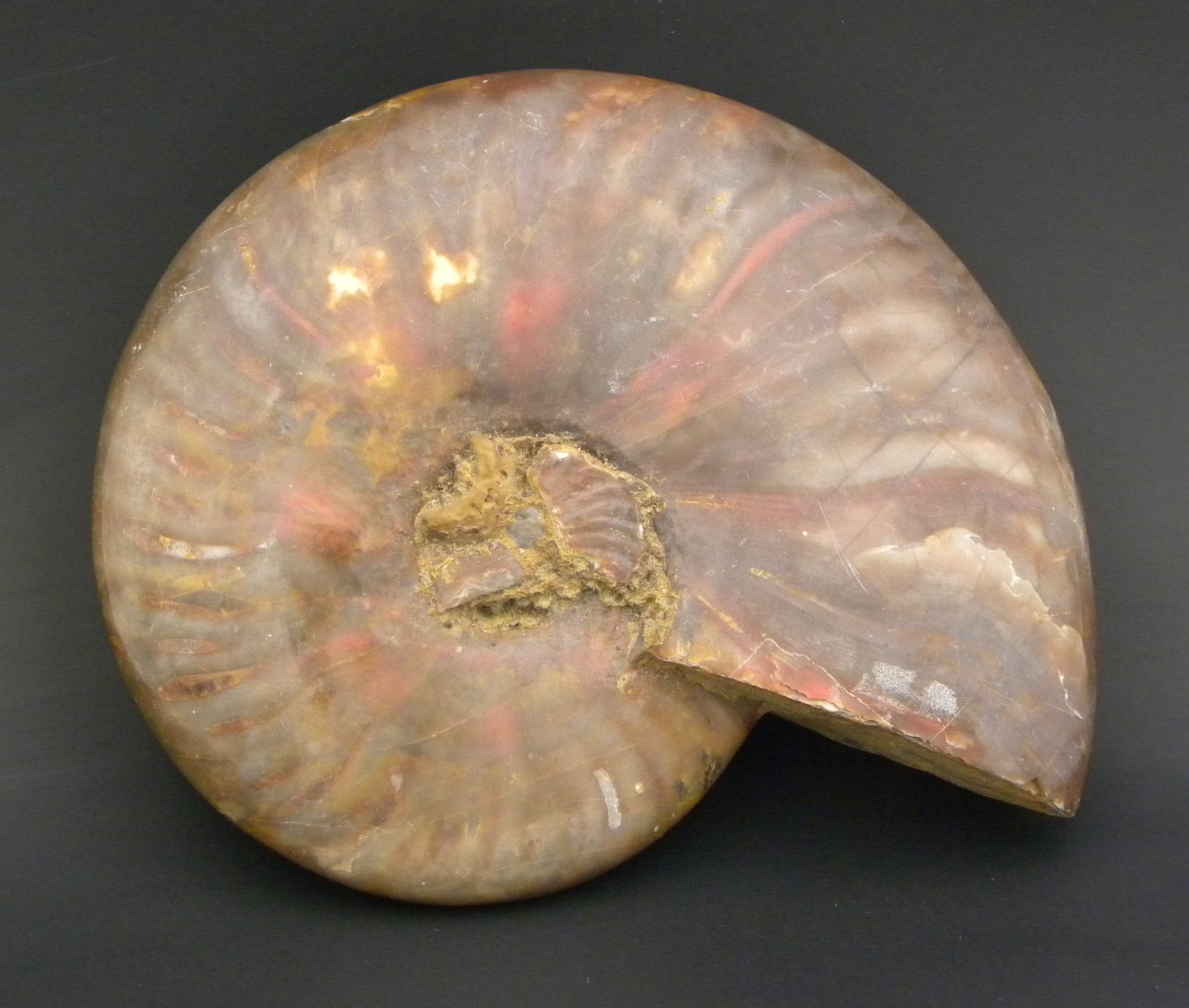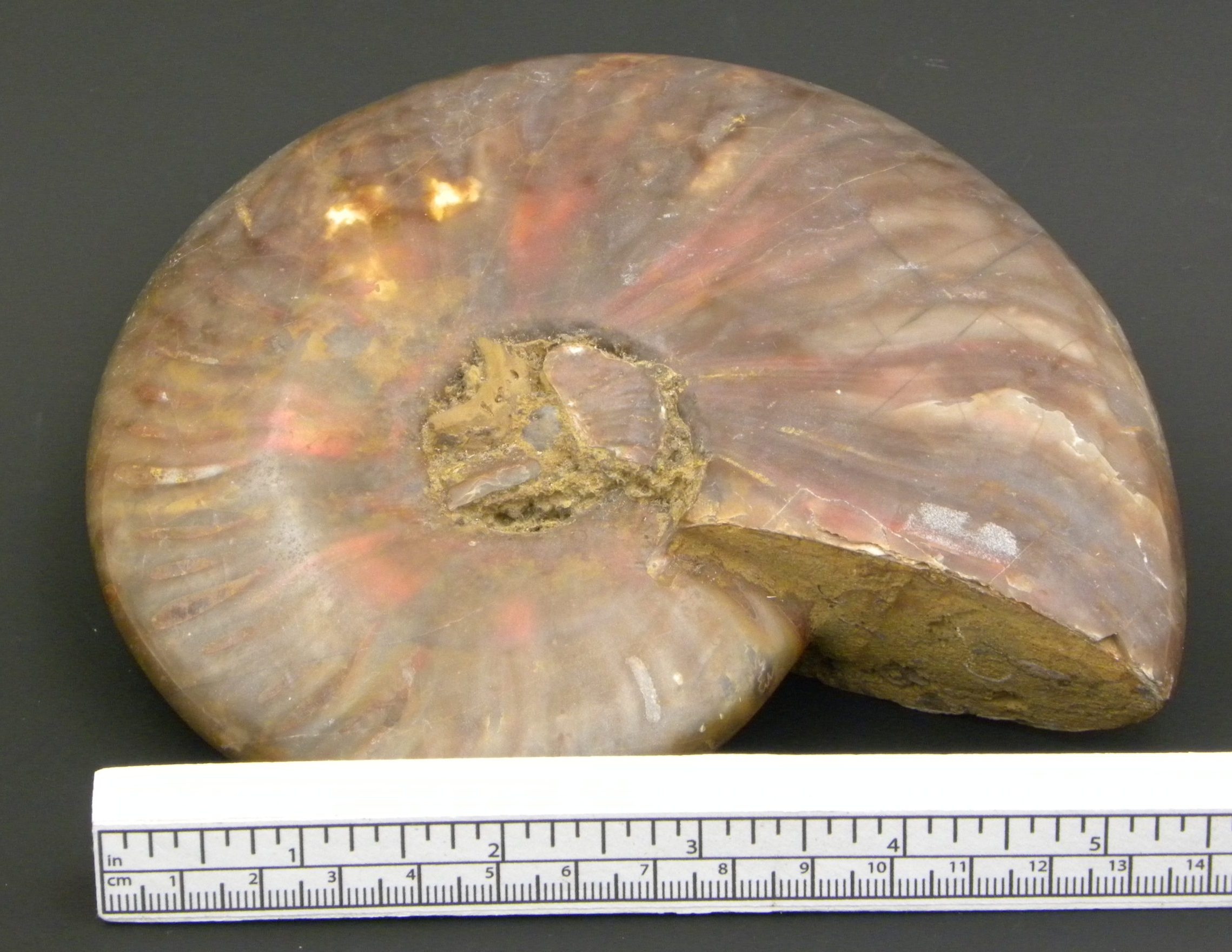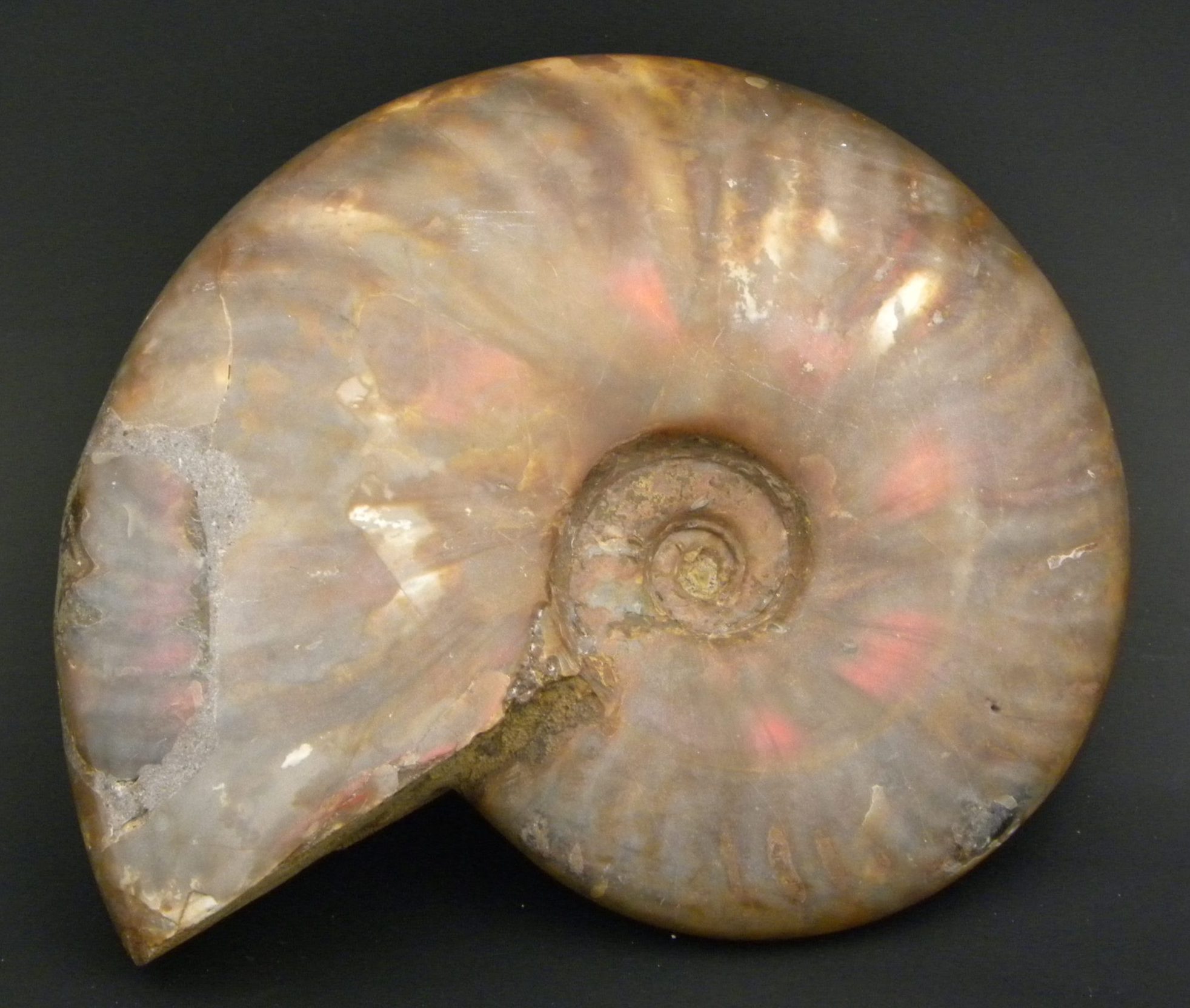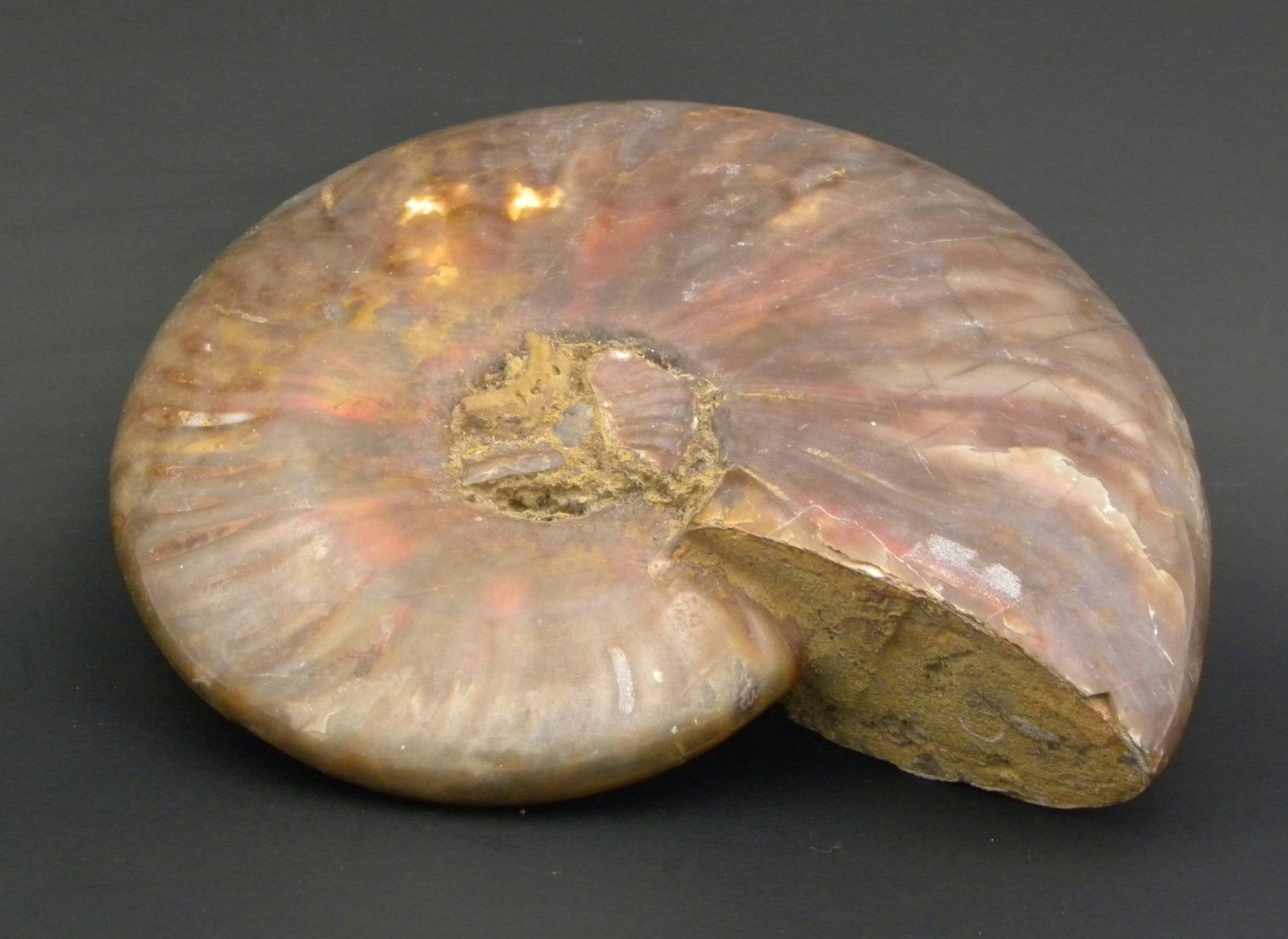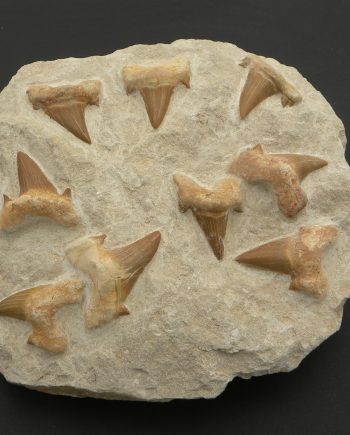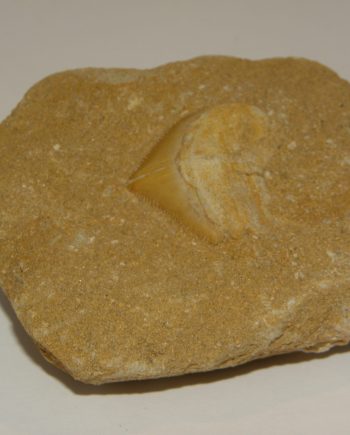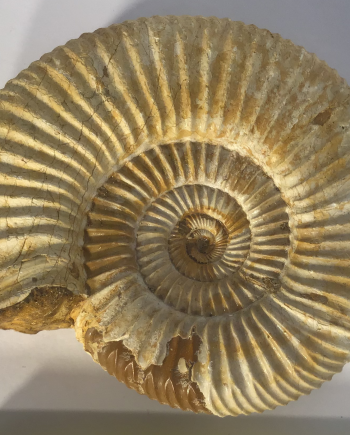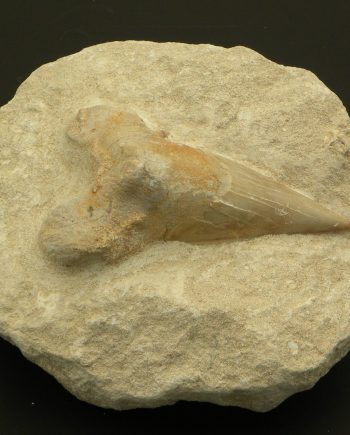Description
Ammonite cleoniceras Cretaceous approx. 120 million years old,
This is a large ammonite cleoniceras with beautiful natural iridescent flashes. This specimen has been prepared but left unpolished, some collectors prefer them this way. These beautiful ammonites are naturally iridescent, some pale, whereas others have a red opal like lustre. This is formed when the mineral aragonite replaces the ammonite shell during the fossilisation process. It is not unusual for fossils millions of years old to require a small amount of restoration work, as is the case here. This does not detract from what still is a very impressive specimen whatsoever. These Madagascan Ammonites come from a remote area of the Mahajanga jungle on the north east coast of the island. This type of fossil dates back to the Cretaceous period 120 million years ago.
Ammonites have been extinct for 65 million years, and were a form of Cephalopod, a group of marine molluscs. These first appeared in the Devonian Period, over 4oo million years ago. As ammonite grew larger they also added new chambers to their shell, with the actual mollusc only living in the largest and newest chamber. The name Ammonite, derives from from ‘Ammon’ the Greek God. Ammonites were plankton feeders, with long tentacles, and they also swam upright. Altogether, there were in the region of four thousand different species. Ammonites became extinct 65 million years ago. The squid, octopus and also cuttlefish that swim in our seas now however, are close relations.


